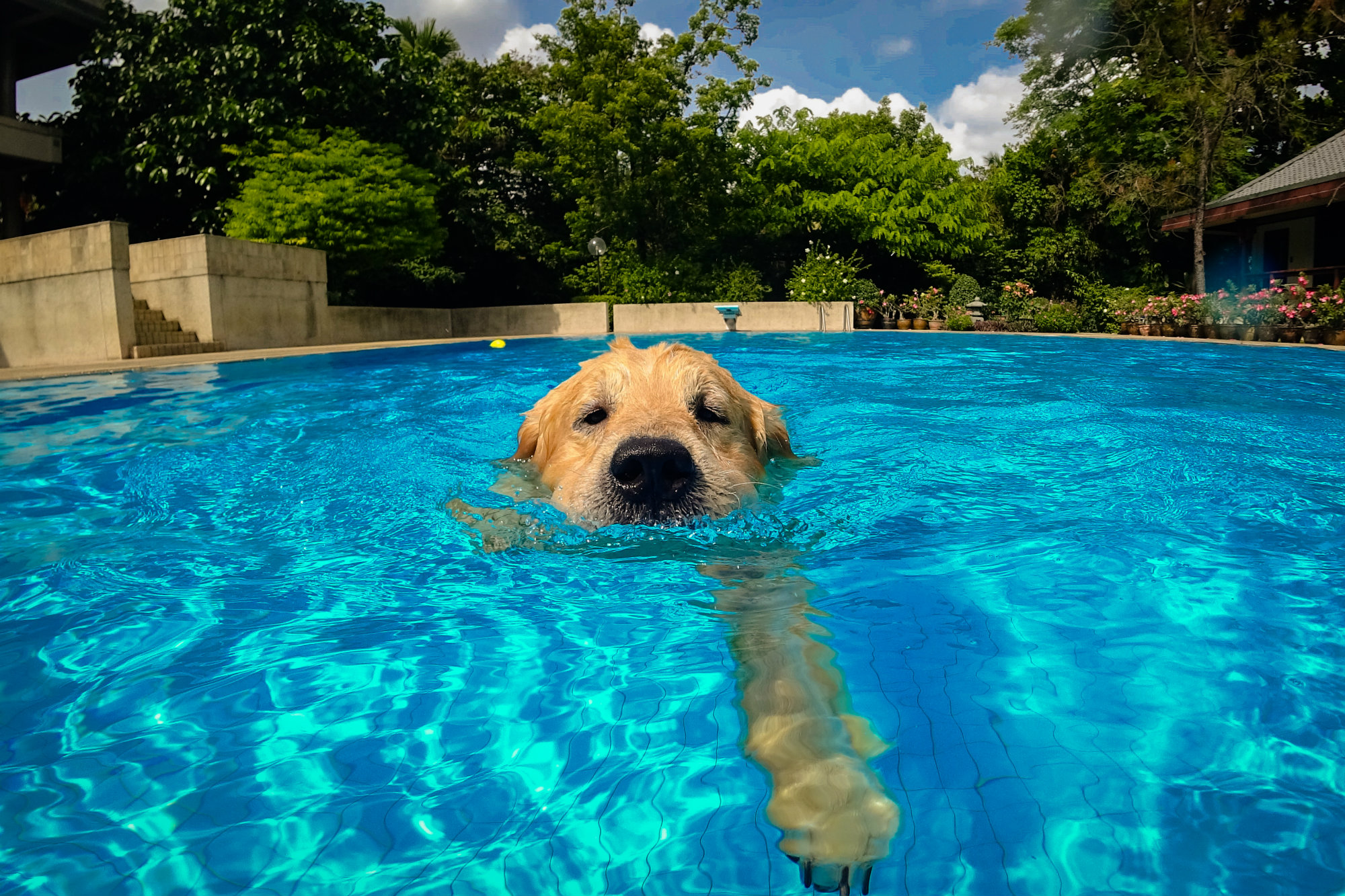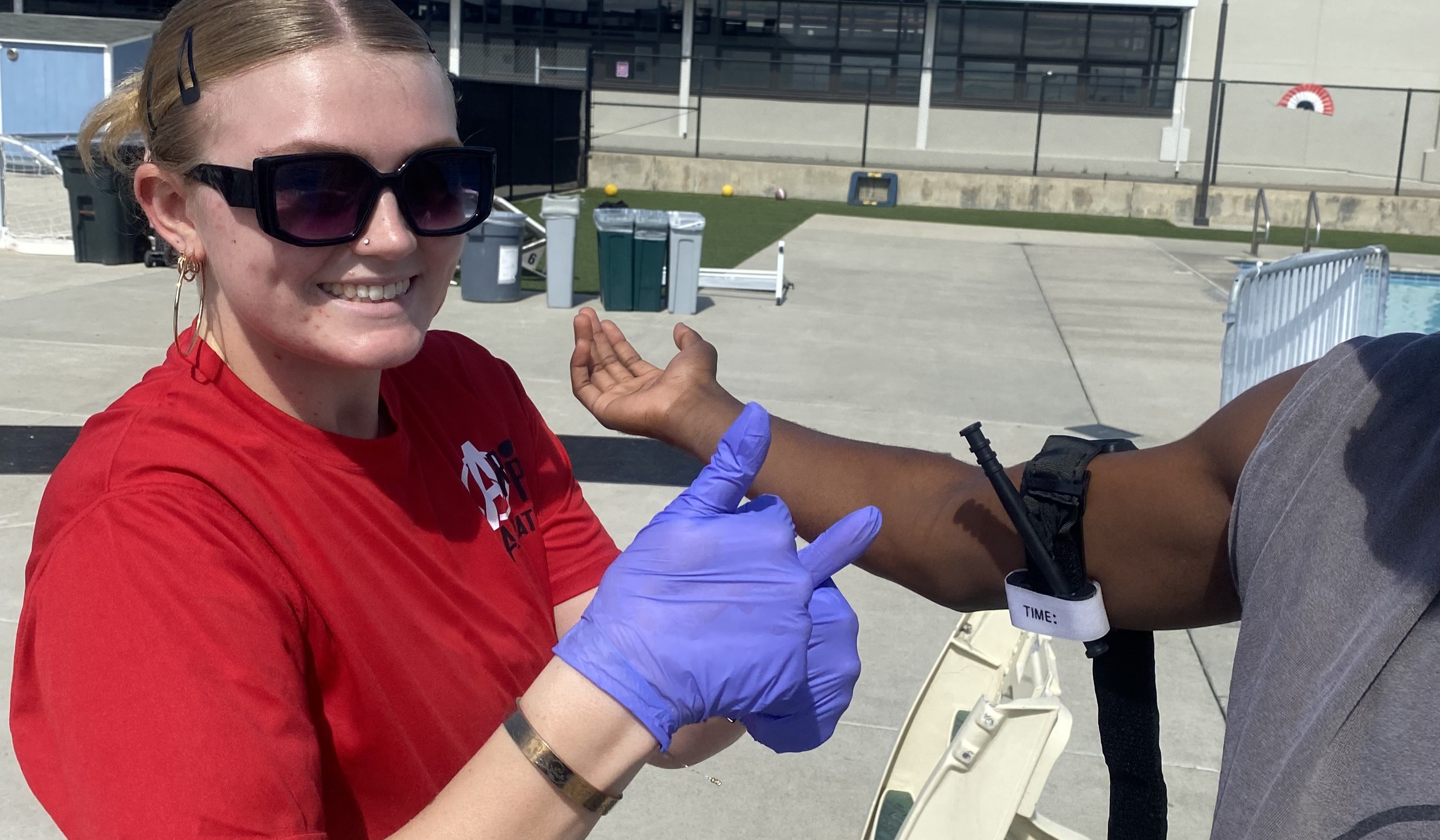Picture this: You head to a client’s house to service their brand-new swimming pool. You knock on the door and hear a high-pitched yelping. When the client opens the front door, he has a small puppy wriggling around in his arms.
“Sorry about him,” the client says with a nervous smile. “He’s the newest member of the family.”
Learning the ins and outs of pool maintenance is hard enough without adding a puppy into the mix! Your client has quite a lot of work ahead taking care of his pool and his pup.
With a little guidance and some helpful tips, you can support even the least experienced pet parent and poolowner as they learn to safely manage both. Whether you work with aboveground or inground pools, whether it’s a pool for pets or just for people, these few key steps can help get you on your way.
Know Your Breeds
As soon as you find out that a client has a dog, you should ask them what kind of breed it is.
This is key information that will help you determine what information they’ll need to do their job. It’ll also a great way to build rapport!
Some dogs, such as retrievers or poodles, make for excellent swimmers — in fact, they were originally bred to hunt waterfowl. However, these dogs — retrievers in particular — can leave behind a lot of hair, which can cause big problems for the filter. If your clients have these breeds, make sure they know to check their skimmer more often if the pup goes for a swim.
If your client has a water-averse dog, such as a pug, corgi or bulldog, make sure they know not to expect their pet to be a strong swimmer. They should take extra steps to protect their pooch by investing in a dog life jacket or by learning canine CPR — a good tip for any pet owner.
Offer Training Tips
While your clients may be champing at the bit to hop in the pool with their new four-legged friend, they may not know the best and safest methods for teaching the dog to swim. That’s where you come in!
The first skill to teach any dog, even a natural swimmer, is how to get out of the pool. This is a new, foreign environment for the dog, and he needs to know how to exit the water on his own if necessary.
Tell your client to carry the pet into the water and help him doggy paddle over to the nearest exit. They should repeat this process until the dog is comfortable and capable of finding the exit on his own. With each repetition, move farther away from the exit.
Talk About Pool Chemicals
Every pool owner needs to know how to keep their pool chemistry balanced for a clean pool and a healthy swimming experience. But when your client has a new dog in the house, he may want to have a better understanding of what’s in their water.
For instance, they might ask, “Is it safe for the dog to drink the water?”
Generally speaking, chlorinated pool water is fine for dogs to drink. Chlorine is heavily diluted in the pool, so there’s likely not enough to cause a dog more than a mild stomach ache. However, you will want to make sure your chlorine tablets or chlorinating liquid is safely stored somewhere out of reach of the pets, or any children.
It’s also important to remember that chlorine can irritate some people and animals if they have sensitive skin or eyes. Pool owners should always rinse off their dogs with fresh water after a swim, and keep an eye out for signs of skin irritation. If this is a concern for your client, let them know that they can opt for a chlorine-free sanitizer, such as bromine or an ionizer, although that can be more expensive.
Pool owners also should keep their eyes peeled for signs that their dog is suffering from an ear infection after a swim. While this isn’t directly related to pool chemicals, it is a common problem for dogs who spend time in the pool. Water can get trapped in their irregularly shaped ear canals, which can lead to bacteria growth and infection.
Dog owners whose pets swim a lot should regularly clean their dog’s ears with a cleanser and do their best to dry their pet’s ears after a dip.
Get Serious About Safety
Every pool owner needs to be diligent about safety, but especially so if there are pets or children living in the home. The first few months with a new dog or a new pool will be the most critical.
If the homeowner has the option in designing their pool, recommend that they include a resting spot shallow enough for people and pets to sit comfortably in the water so that they can catch their breath.
If the pool is below ground, you should also impress upon your client how important a pool fence can be in protecting their pet when no one is there to watch him swim. Direct him to a fence that is durable, impossible to squeeze through (especially if he has a little dog), and has a sturdy latch that can’t be pushed open by a curious puppy’s snout.
Aboveground pools may still pose a risk if they are set against a deck, or placed in a position that affords the dog access to the water. A fence may still be necessary in this case.
With the safety barrier in their pool area, your client can feel much more confident about letting their new best friend roam the yard unsupervised.



